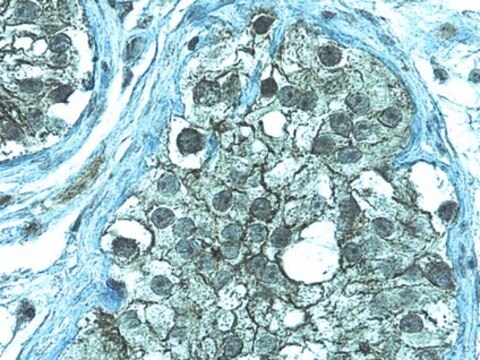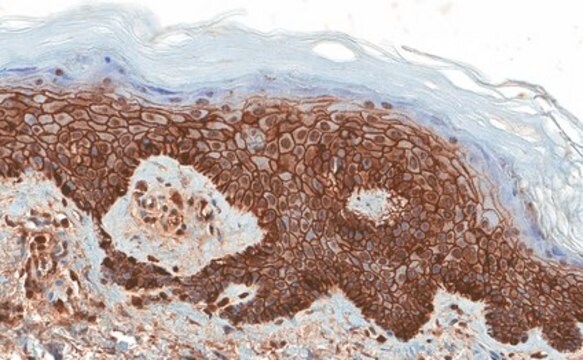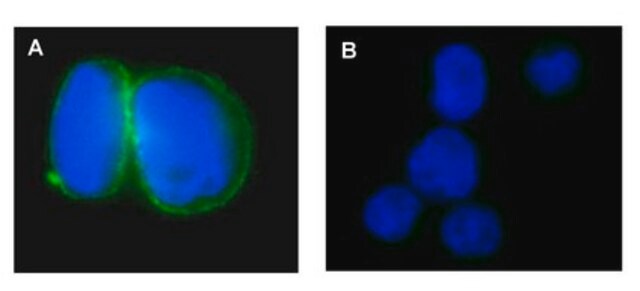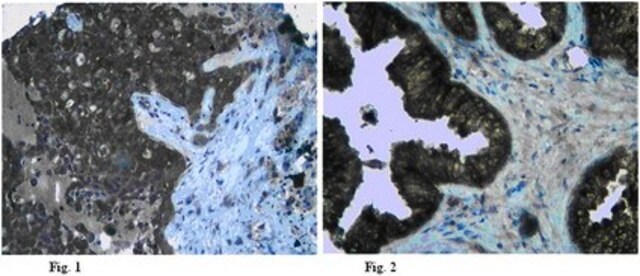MABC1814
Anti-CD44v6 Antibody, clone C44Mab-9

Synonym(s):
CDw44, Epican, Extracellular matrix receptor III (ECMR-III) GP90 lymphocyte homing/adhesion receptor, HUTCH-I, Heparan sulfate proteoglycan, Hermes antigen, Hyaluronate receptor, LHR, Phagocytic glycoprotein 1 (PGP-1), Phagocytic glycoprotein I (PGP-I)
About This Item
Recommended Products
biological source
mouse
Quality Level
antibody form
purified antibody
antibody product type
primary antibodies
clone
C44Mab-9, monoclonal
mol wt
calculated mol wt 82 kDa
observed mol wt ~N/A kDa
purified by
using protein G
species reactivity
human
packaging
antibody small pack of 100
technique(s)
ELISA: suitable
flow cytometry: suitable
immunohistochemistry: suitable
western blot: suitable
isotype
IgG1κ
epitope sequence
N-terminal half
Protein ID accession no.
UniProt accession no.
storage temp.
2-8°C
Gene Information
human ... CD44(960)
Specificity
Immunogen
Application
Evaluated by Flow Cytometry in a CHO cells overexpressing CD44v3-10.
Flow Cytometry Analysis: 1.0 µg of this antibody detected CD44v6 in one million CHO cells overexpressing CD44v3-10.
Tested Applications
Flow Cytometry Analysis: A representative lot detected CD44v4 in Flow Cytometry applications (Ejima, R., et al. (2023). Int. J. Mol. Sci. 24(4):4007).
Western Blotting Analysis: A representative lot detected CD44v4 in Western Blotting applications (Ejima, R., et al. (2023). Int. J. Mol. Sci. 24(4):4007).
Immunohistochemistry Applications: A representative lot detected CD44v6 in Immunohistochemistry applications (Ejima, R., et al. (2023). Int. J. Mol. Sci. 24(4):4007).
ELISA Analysis: A representative lot detected CD44v4 in ELISA applications (Ejima, R., et al. (2023). Int. J. Mol. Sci. 24(4):4007).
Note: Actual optimal working dilutions must be determined by end user as specimens, and experimental conditions may vary with the end user.
Target description
Physical form
Reconstitution
Storage and Stability
Other Notes
Disclaimer
Not finding the right product?
Try our Product Selector Tool.
Certificates of Analysis (COA)
Search for Certificates of Analysis (COA) by entering the products Lot/Batch Number. Lot and Batch Numbers can be found on a product’s label following the words ‘Lot’ or ‘Batch’.
Already Own This Product?
Find documentation for the products that you have recently purchased in the Document Library.
Our team of scientists has experience in all areas of research including Life Science, Material Science, Chemical Synthesis, Chromatography, Analytical and many others.
Contact Technical Service





